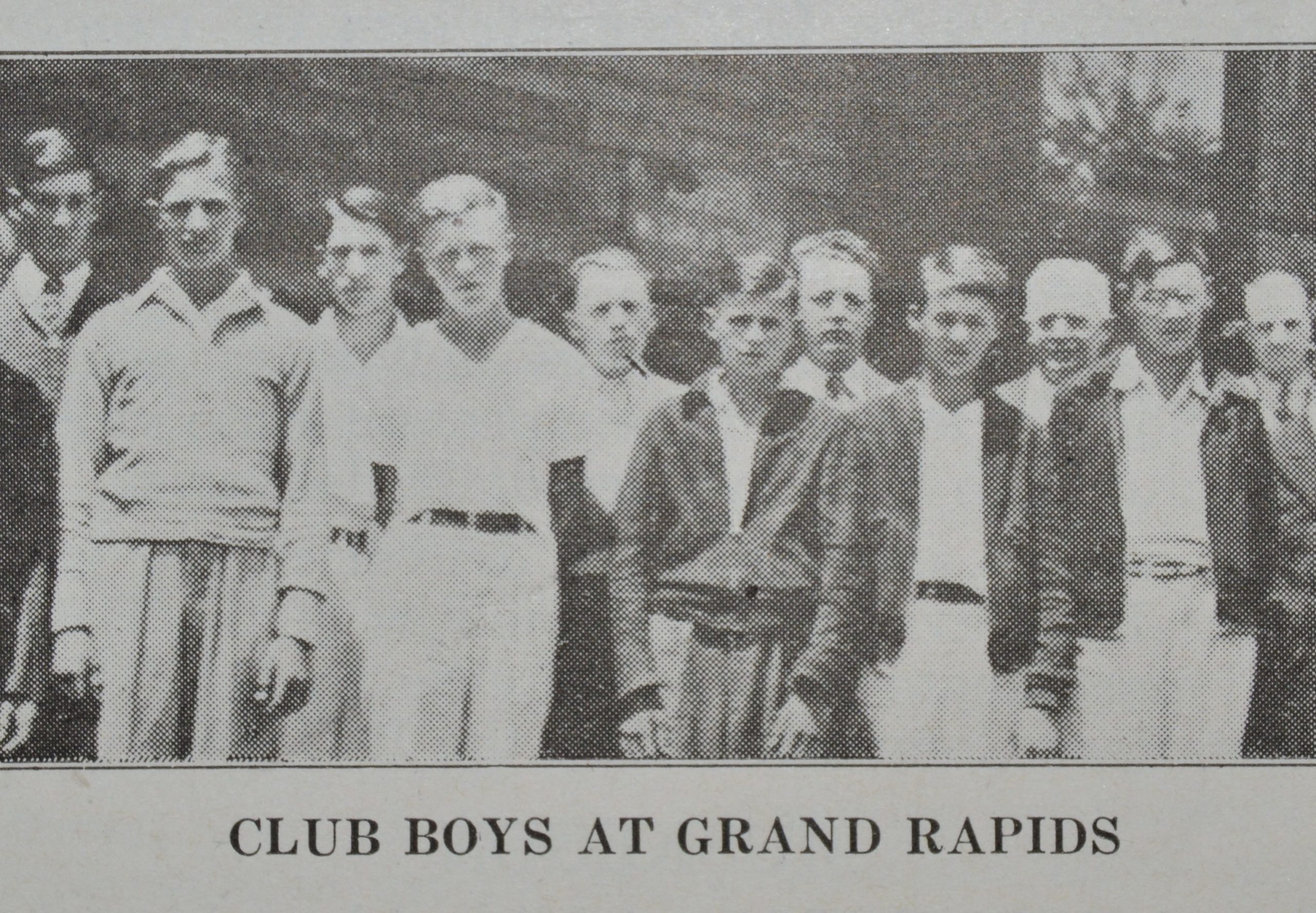In 1935, a select group of young men were chosen for the first time, to wake up early, hitch a ride on a milk route and follow the milk as it went from the farm to the consumer learning how milk was marketed. Coordinated between Michigan 4-H and MMPA, this was the birth of the MMPA 4-H Milk Marketing Tour that continues today every June at the MMPA headquarters in Novi.
Older 4-H Club members were chosen to participate in the tour by the success of their dairy projects and after the tour, they each had to write an essay about their experience. Each year, two boys were chosen as winners, based on their essays, earning a trip to the annual National Dairy Show. The winning essay was published in the Michigan Milk Messenger. Merton Henry of Marne, wrote the winning inaugural milk marketing essay in his piece entitled “From Cow to Consumer” in the September 1935 issue of the Milk Messenger.
What Merton Henry wrote eighty-some years ago is still relevant today transcending generations of consumers:
“’Very few people realize the amount of work required to bring them their quart of milk every morning.’ Those were the words with which the milkman greeted me at 1:45 am Saturday, August the tenth as I stepped into his wagon and his big white horse drew us out into the deserted streets of Grand Rapids. The city peddler was not the only one with this idea. Chuck Groeneland, who took me to Grand Rapids in his truck Friday morning, had the same idea. Since I have followed the milk all the way to the doorsteps of my city cousins, I have arrived at the same conclusion. But let’s see how much work it actually requires to care for this milk from cow to consumer.
“To begin with there are requirements on the farm placed there largely by city laws and the Milk Producers Association for the protection of the public. These requirements concern the production and care of the milk up until the time it leaves the farm. The public takes it for granted that their milk is clean and produced under the best of conditions. If they get their milk from a fair-sized city they are probably right, if they buy from a small dairy in a small town they may be wrong. Let’s take a look at the conditions under which milk is produced for the bulk of our dairies and creameries. First every barn must allow at least four hundred cubic feet of air space and four square feet of window space for each cow The idea back of this is that with plenty of air a cow is less likely to be sick and therefore is less likely to produce diseased milk; the window space provides plenty of sunlight, sun kills germs and so we have cleaner milk.”
Henry went on to explain in detail about his tour and the rigors of delivering a high quality product from cow to consumer.
The early tours focused on the Detroit market. In the 30s nearly all milk for Detroit was first shipped to country receiving stations then sent to Detroit dairies. There were about 12,000 producers supplying the MMPA Detroit market with average daily deliveries of about 175 pounds in June. Total market deliveries were about 2 million pounds per day and announced all-milk price of about $1.75/cwt. This was in the throes of the Great Depression.
Through the years the students not only learned how milk was marketed but were treated to baseball games, watched the production of the radio show, Marshall Wells Farm Forum program, at WJR and participated in a television show in Detroit. In the 1950s, the tour was suspended for two years because of the war. Two decades later, the women’s movement hitched a ride on the tour and girls were invited to participate for the very first time in 1974.
It was important to the leadership in Michigan agriculture that youth learn how milk was marketed but little did they know that the infant years of the tour they would cultivate a passion and produce one of their own cherished leaders of MMPA.
On one of the early tours, a Branch County youth named Jack Barnes was selected to participate. He reflected on the tour, “It was one of my most cherished 4-H experiences. Just the thought of a farm youngster from our county, almost 150 miles from Detroit going to the big city in the early 1930s was all by itself awesome and even frightening.”
Barnes’ biggest take away from the tour was that farmers had an organization dedicated to helping them. When he graduated from college, he served in the military and upon discharge he began his career at MMPA as a field man in 1959 and retired as the General Manager in 1985.
This year marks the 79th time that Michigan 4-H and MMPA will team up to provide the MMPA 4-H Milk Marketing tour. When the two-day tour is finished, the students were tested on what they learned and will be interviewed in July to sort out the top five attendees who will be rewarded with a trip to the National 4-H Dairy Conference in Madison, Wisconsin.
MMPA leadership recognized the importance of developing future dairy industry leaders in 1935 and today they continue to spur on the young leadership required to carry the cooperative for another hundred years.
–Melissa Hart
This article originally appeared in the July 2016 issue of the Michigan Milk Messenger.

